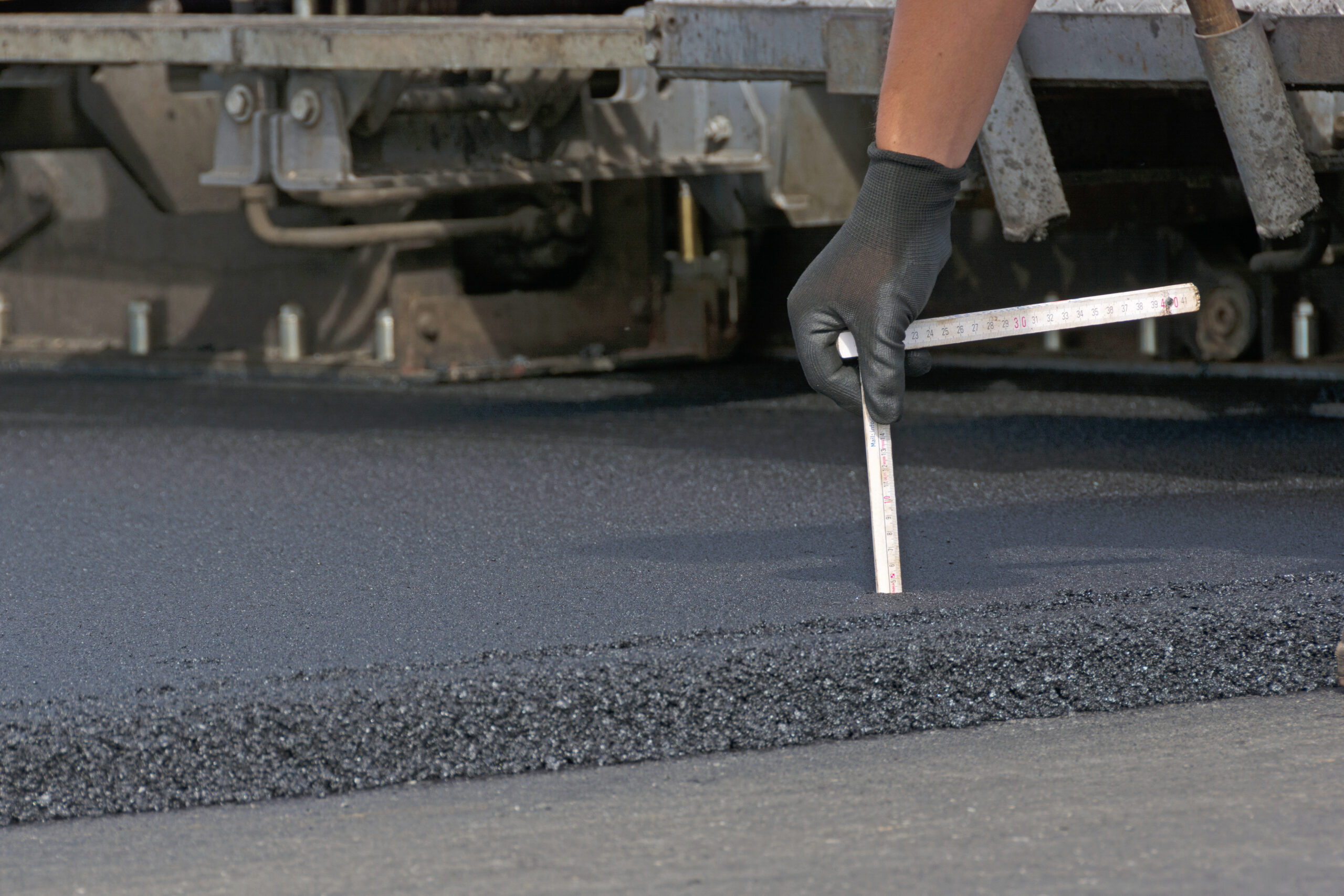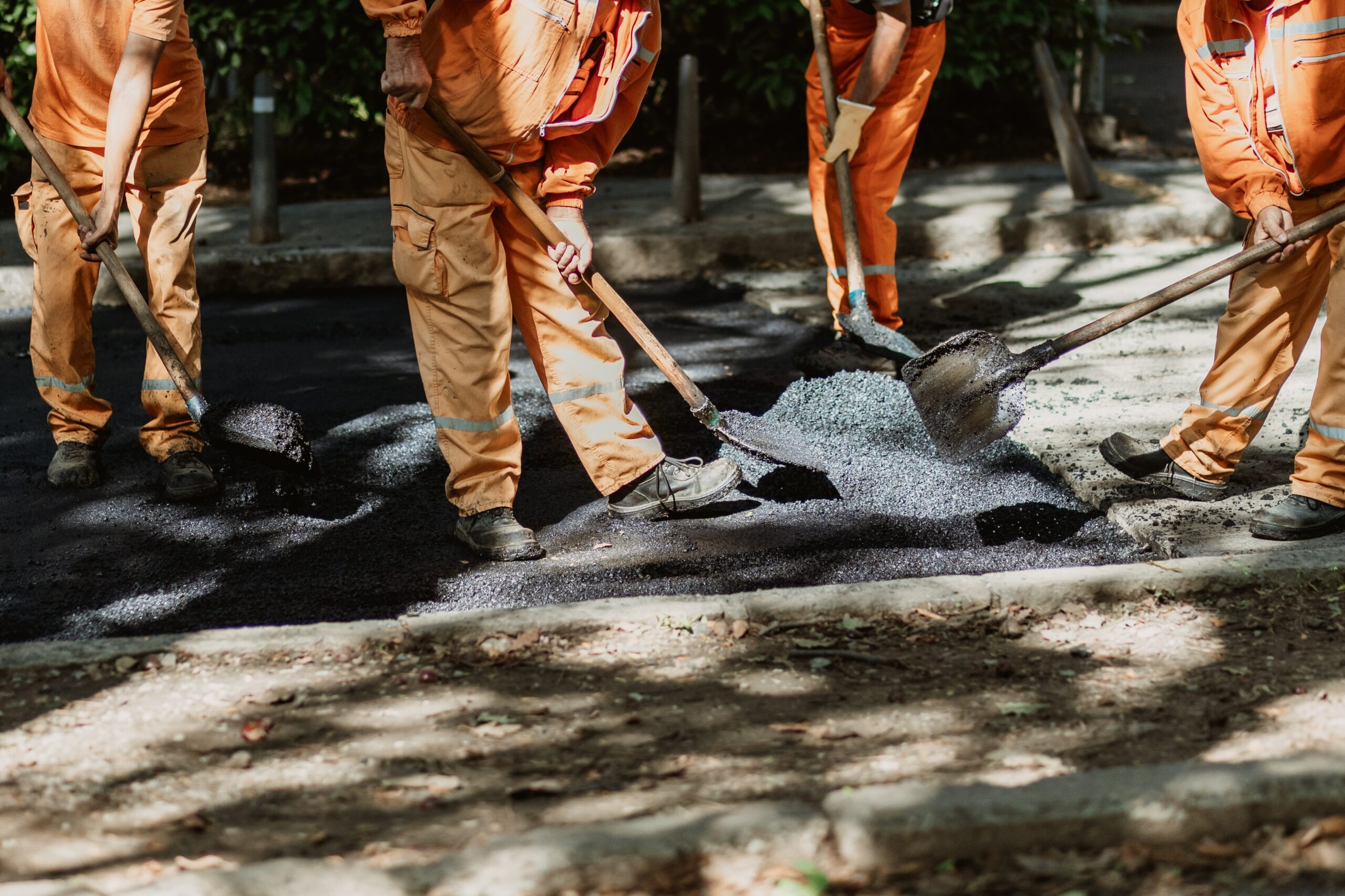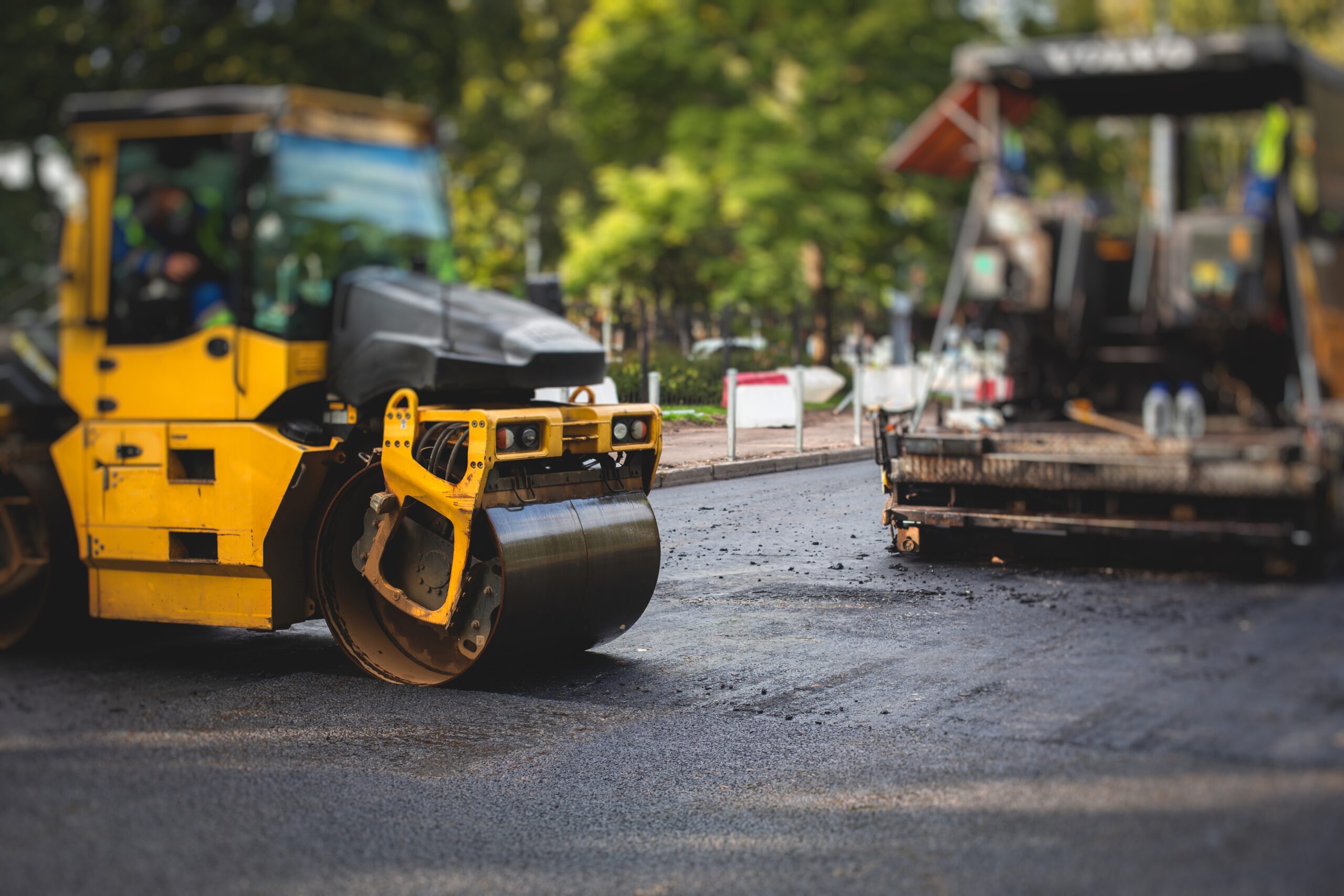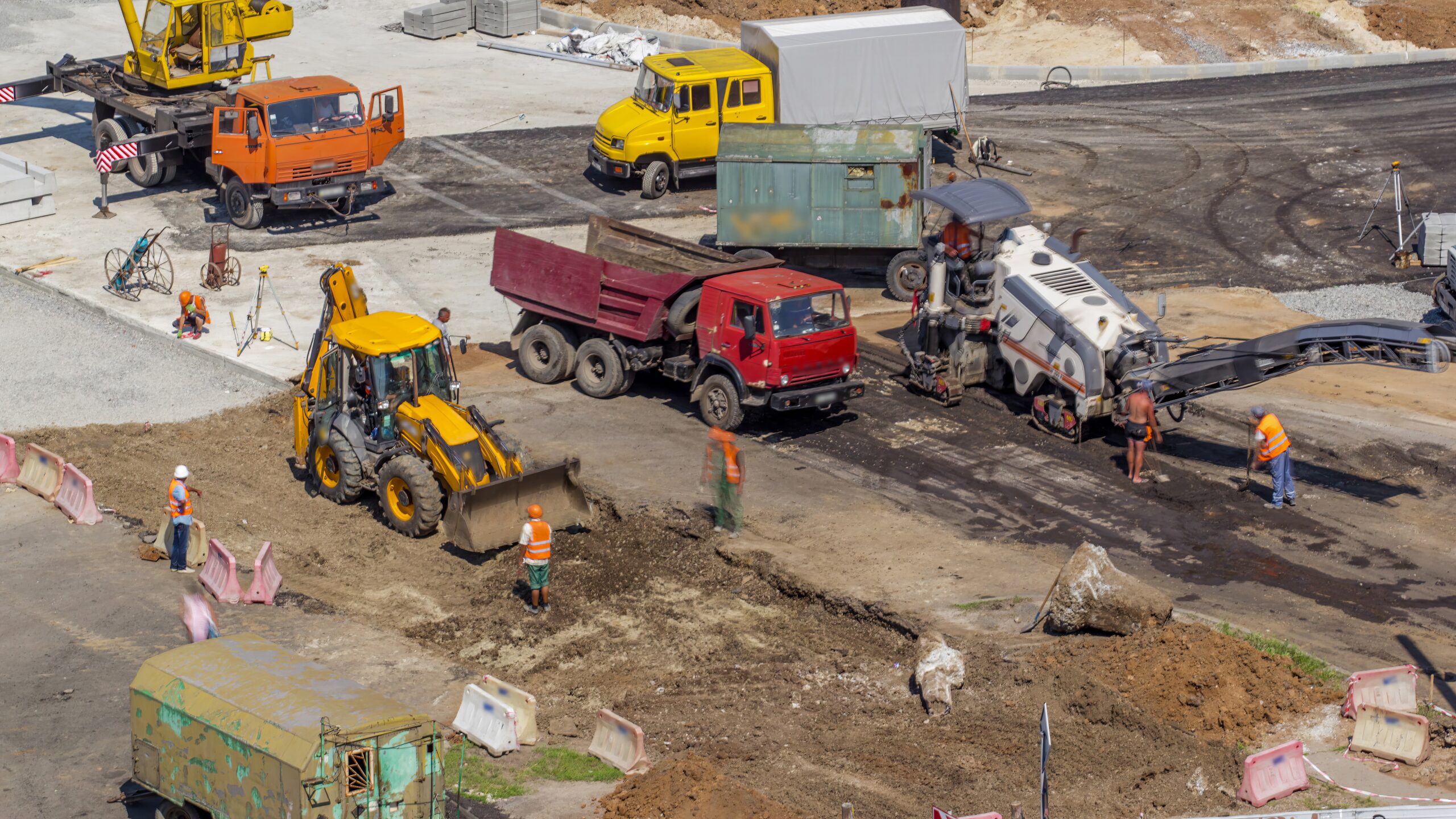
Your parking lot is a reflection of your property’s safety, value, and overall maintenance. When damage such as cracks, potholes, or fading appears, it not only impacts curb appeal but also poses safety risks and increases liability. An asphalt overlay is an effective solution, providing a fresh layer of asphalt over existing pavement to restore functionality and aesthetics without the need for a complete replacement. Recognizing when an overlay is necessary helps protect your investment and prevent further deterioration. In this guide, we explore the signs that indicate the need for an overlay, the process involved, and when resurfacing is the best option. In this guide, we explore when to overlay vs replace your asphalt surface
What Is an Asphalt Overlay?
An asphalt overlay is a new asphalt layer applied over an existing pavement surface. It restores surface quality, corrects structural flaws, and extends pavement lifespan. Overlay thickness typically ranges from 1.5 to 2 inches, depending on surface condition.
Overlay Process Overview:
- Surface preparation: cracks are sealed, loose materials removed
- Leveling course: low spots are leveled
- Overlay application: hot asphalt is laid and compacted
- Finishing: striping and final inspection
This cost-effective method is suitable when the base structure remains intact. It’s used across commercial parking lots maintenance, roads, and industrial surfaces.
Pavement Layer Structure: How Overlays Fit In
Overlays add a new surface course while preserving the existing base. They reinforce surface integrity without disturbing lower structural layers.
Standard Pavement Structure:
- Subgrade: Natural soil foundation
- Sub-base: Crushed stone for drainage
- Base course: Structural support for traffic
- Surface course: Asphalt mix exposed to vehicles
- Overlay (if applied): A new asphalt layer that revives the surface
Overlays strengthen the surface, reduce water infiltration, and restore ride quality without a full rebuild. Proper bonding between old and new layers ensures durability.
Key Signs That Indicate You Need an Asphalt Overlay
Not all surface damage requires reconstruction. Spotting overlay-worthy symptoms early reduces long-term damage and cost.
1. Widespread Surface Cracking
Cracking is the most visible early warning. It occurs due to age, thermal stress, or traffic load.
Types of Cracks to Watch:
- Alligator cracking: Resembles reptile skin, indicates surface fatigue
- Block cracking: Large rectangular patterns, often from oxidation
- Transverse cracks: Stretch across lanes due to thermal cycles
Overlay is suitable if cracks are shallow and don’t affect sub-layers.
2. Pooling Water or Drainage Issues
Standing water indicates proper drainage is crucial for asphalt longevity or improper slope. This weakens asphalt and speeds deterioration.
Common Drainage Symptoms:
- Puddles forming after rain
- Water following tire ruts
- Erosion at lot edges
A new overlay can restore slope grade and improve water runoff efficiency.
3. Faded Striping and Surface Wear
UV rays and oxidation fade asphalt color and lot markings. The surface becomes brittle and weak over time.
Typical Surface Wear Indicators:
- Gray, dusty surface
- Faint or missing lane markings
- Rough, grainy texture
Overlay restores smoothness and allows fresh striping for improved visibility and traffic flow.
4. Minor Potholes and Surface Depressions
Small potholes in asphalt form when water infiltrates cracks and freezes, expanding inside. If left untreated, they grow and damage lower layers.
When Overlay Works:
- Damage is limited to surface
- Base layer is still solid
- Potholes are not clustered or widespread
Surface patching followed by overlay is a common restoration method.
5. Previous Repairs Are Failing
Repeated patching or sealing is a temporary fix. If repairs keep failing or deteriorate fast, the surface likely needs full resurfacing.
Watch for:
- Multiple patches in the same area
- Uneven surface texture
- Frequent maintenance cycles
Overlay offers a longer-term solution when short-term fixes become ineffective.
When an Overlay Is Not Enough
In some cases, the damage goes beyond surface repair. Then, a full mill-and-replace or reconstruction may be necessary.
Overlay is NOT suitable when:
- Sub-base is unstable or waterlogged
- There’s heaving or deep rutting
- Cracks penetrate all pavement layers
- Drainage problems originate from foundational issues
A professional inspection determines whether overlay or reconstruction fits your surface condition.
Asphalt Overlay vs. Full Replacement
This highlights the key differences between resurfacing with an asphalt overlay and opting for a full replacement.
| Factor | Asphalt Overlay | Full Replacement |
| Cost | Lower | Higher |
| Time to Complete | 1–3 days | 5–10 days |
| Structural Repair | Surface only | All layers |
| Best Use Case | Surface wear or light cracks | Deep cracks or base failure |
| Lifespan Improvement | Adds 8–12 years | Adds 20–30 years |
| Downtime | Minimal | Longer |
Now that you know the options, let’s explore where to use them.
Overlay Benefits for Parking Lot Owners
A timely overlay delivers significant advantages with minimal disruption.
- Cost-Efficiency: Up to 60% cheaper than reconstruction
- Faster Turnaround: Reduces business downtime
- Enhanced Appearance: Restores smooth blacktop finish
- Extended Lifespan: Delays major repairs by a decade
- Improved Safety: Eliminates trip hazards and faded lines
Overlaying is ideal for properties that need visual improvement and renewed function without deep structural repairs.
Property Types That Benefit Most from Overlays
Different property types face different wear conditions. Overlay solutions can be tailored to each.
| Property Type | Overlay Use Cases | Ideal Conditions |
| Commercial | Parking lots, retail entries | Surface aging, cracking, worn lines |
| Industrial | Light truck lanes, loading areas | Surface fatigue, minor rutting |
| Residential | Community lots, driveways | UV fading, potholes, shallow cracks |
| Public Infrastructure | Park lots, transit stations | Water pooling, alligator cracking |
Why Trust Us with Your Parking Lot Overlay
We specialize in asphalt overlay projects that restore surface integrity, improve safety, and reduce long-term costs. With decades of field experience, our crew understands how to evaluate, prep, and overlay with precision.
What We Provide:
- Free On-Site Assessments: We evaluate drainage, structure, and usage
- Overlay Suitability Testing: We perform base strength and moisture checks
- Custom Overlay Plans: Designed around your surface needs and budget
- Efficient Execution: Completed with minimal disruption to your business
- Post-Overlay Maintenance: Striping, sealcoating, and long-term care
Our Eco-Conscious Overlay Practices
Overlaying is already more sustainable than reconstruction. But we go further.
- Use of Recycled Asphalt in Overlays
- Warm Mix Asphalt for Lower Emissions
- Optimized Equipment for Reduced Fuel Use
- Compliance with LEED and Local Environmental Standards
We combine durability and environmental performance for long-lasting results with minimal environmental impact.
Frequently Asked Questions
What are the key signs that my parking lot needs an asphalt overlay?
Signs include alligator cracking, potholes, raveling (loss of aggregate), fading or discoloration, and standing water due to poor drainage. These issues indicate surface deterioration that can be addressed with an overlay to restore functionality and appearance.
How does standing water indicate the need for an overlay?
Pooling water suggests improper grading or drainage issues in the parking lot. An asphalt overlay can correct the grade and prevent further water damage by directing runoff to appropriate drainage points.
Can faded or discolored asphalt signal the need for an overlay?
Yes, fading caused by UV rays and weather exposure weakens the asphalt’s surface layer. An overlay can restore its rich color and improve durability, extending the pavement’s lifespan.
Are small cracks and potholes enough reason to consider an overlay?
Yes, minor to moderate cracks and potholes can be repaired before applying an overlay. This process strengthens the surface and prevents further damage without requiring a full replacement.
When is an overlay not sufficient for parking lot repair?
If the damage extends into the base or subgrade of the pavement, such as severe structural issues or extensive upheavals, a complete replacement may be necessary instead of an overlay.
Let’s Restore Your Parking Lot the Right Way
When your lot shows signs of wear, we’re ready to help. Our asphalt paving services ensure long-lasting, safe, and visually appealing surfaces. From assessment to final rollout, we focus on quality, speed, and satisfaction.
Whether it’s retail, residential, or industrial – we handle overlays with precision. Contact Asphalt Coatings Company today for a no-obligation inspection and discover how our resurfacing services can protect and enhance your investment. Our expert team is here to provide you with the best solutions tailored to your property’s unique needs.



